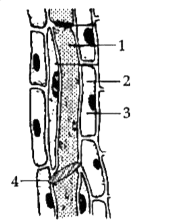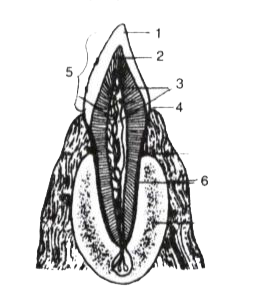Out of C2H6andC2H4. Identify the saturated compound. Give reason in support of your answer
To identify the saturated compound between C₂H₆ and C₂H₄, we need to understand the definitions of saturated and unsaturated compounds.
1. Understanding Saturated and Unsaturated Compounds:
- Saturated compounds are those that contain only single bonds between carbon atoms. They have the maximum number of hydrogen atoms attached to each carbon atom.
- Unsaturated compounds contain one or more double or triple bonds between carbon atoms, which means they have fewer hydrogen atoms than saturated compounds.
2. Analyzing the Given Compounds:
- The first compound is C₂H₆ (Ethane):
- It has 2 carbon atoms and 6 hydrogen atoms.
- The structure of C₂H₆ is: H₃C-CH₃, which shows that it contains only single bonds.
- The second compound is C₂H₄ (Ethene):
- It has 2 carbon atoms and 4 hydrogen atoms.
- The structure of C₂H₄ is: H₂C=CH₂, which shows that it contains a double bond.
3. Determining Saturation:
- Since C₂H₆ has only single bonds, it is classified as a saturated compound (alkane).
- C₂H₄, on the other hand, contains a double bond, making it an unsaturated compound (alkene).
4. Conclusion:
- Therefore, the saturated compound between C₂H₆ and C₂H₄ is C₂H₆.
Reasoning:
- C₂H₆ is an alkane, which is defined as a saturated hydrocarbon because it contains only single bonds. In contrast, C₂H₄ is an alkene, which is an unsaturated hydrocarbon due to the presence of a double bond.
- Saturated compounds are those that contain only single bonds between carbon atoms. They have the maximum number of hydrogen atoms attached to each carbon atom.
- Unsaturated compounds contain one or more double or triple bonds between carbon atoms, which means they have fewer hydrogen atoms than saturated compounds.
- The first compound is C₂H₆ (Ethane):
- It has 2 carbon atoms and 6 hydrogen atoms.
- The structure of C₂H₆ is: H₃C-CH₃, which shows that it contains only single bonds.
- The second compound is C₂H₄ (Ethene):
- It has 2 carbon atoms and 4 hydrogen atoms.
- The structure of C₂H₄ is: H₂C=CH₂, which shows that it contains a double bond.
- Since C₂H₆ has only single bonds, it is classified as a saturated compound (alkane).
- C₂H₄, on the other hand, contains a double bond, making it an unsaturated compound (alkene).
- Therefore, the saturated compound between C₂H₆ and C₂H₄ is C₂H₆.
- C₂H₆ is an alkane, which is defined as a saturated hydrocarbon because it contains only single bonds. In contrast, C₂H₄ is an alkene, which is an unsaturated hydrocarbon due to the presence of a double bond.
Similar Questions
Knowledge Check
- Question 1 - Select One
An organic compound C6H12(X) on reduction gives C6H14(Y). X on ozonolysis gives two aldehydes C2H4O(I)andC4H8O(II). Identify the compounds X, Y and aldehydes (I) and (II).
AX=CH3CH=CHCH2CH2CH3,Y=CH3(CH2)4CH3,(I)=CH3CHO,(II)=CH3(CH2)2CHOBX=CH3CH2CH=CHCH2CH3,Y=CH3(CH2)4CH3,(I)=CH3CHO,(II)=CH3CHOCX=CH3CH2CH2CH=CH2,Y=CH3(CH2)4CH3,(I)=HCHO,(II)=CH3(CH2)2CHODX=CH3(CH2)3CH3,(I)=CH3CHO,(II)=CH3CH2CHO
A+CS2+HgCl2 give C2H5−N=C=S. Thus compound
A is :-View SolutionIf A={1,2,3}, B={4,5,6} then, Is the following relation from A → B? Give reason in support of your answer: R4={(4,2), (2,6), (5,1),(2,4)}
View Solution(i) Arrange the following compounds in an increasing order of basic strength :
C6H5NH2,C6H5N(CN3)2,(C2H5)2NHandCH3NH2
(ii) Arrange the following compounds in a decreasing order of pKb values:
C2H5NH2,C6H5NHCH3,(C2H5)2NHandC6H5NH2View SolutionA mixture of C2H6,C2H4 and C2H2 is bubbled through alkaline solution of copper (I) chloride, contained in Woulf's bottle. The gas coming out is:
View SolutionAn organic compound A’ with molecular formula C7H7NO reacts with Br2/aqKOH to give compound B’, which upon reaction with NaNO2&HCl at O∘C gives C’. Compound C’ on heating with CH3CH2OH gives a hydrocarbon D’. Compound B’ on further reaction with Br2 water gives white precipitate of compound E’. Identify the compound A, B, C, D&E, also justify your answer by giving relevant chemical equations.
View SolutionAn organic compound (A) , C4H8Cl2 on hydrolysis forms another compound (B) , C4H8O.
If (B) does not responds to iodo form test , then identify possible structures of (A) and (B).View SolutionA compound 'A' formula of C3H6Cl2 on reaction with alkali can give 'B' of formula C3H6O or 'C' of formula C3H4.'B' on oxidation gave a compound of the formula C3H6O2.'C' with dilute H2SO4 containing Hg2+ ion gave 'D' of formula C3H6O which with bromine and alkali gave the sodium salt of C2H4O2. Then 'A' is
View Solution



